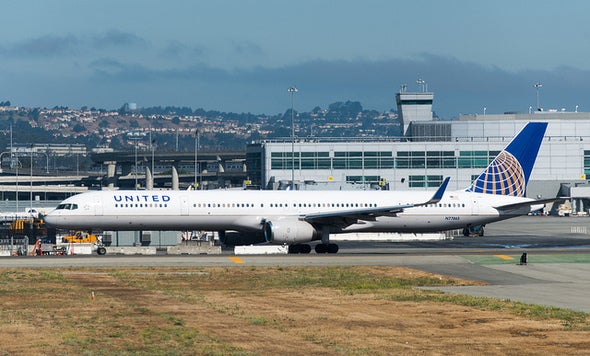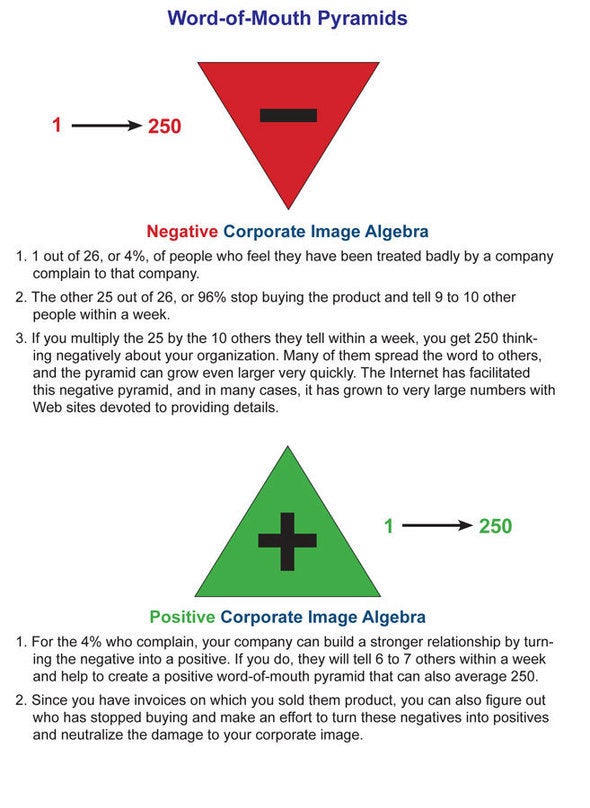
My clients and students often assume that big companies do marketing correctly. In the past week, we have witnessed some big mistakes made by large companies, such as Pepsi and United Airlines. This comes on the heals of Uber and others mishandling marketplace interactions with their customers, employees, and the media.
The new reality
Before mobile technology and social media, companies could make mistakes without having them captured and circulated in viral media. Now, most people have sophisticated recording devices in their phones, and it is very easy for them to share videos in real time with their networks and the world. Too many companies have failed to develop systems and strategies to adjust to this new reality. For your organization to successfully handle the inevitable challenges that come your way, it is important that your employees learn how to transform complaints into successful outcomes for your business.
Looking at complaints as marketing opportunities
The way companies handle complaints can mean the difference between success and failure in an increasingly competitive marketplace. Businesses that turn complaints into opportunities for building closer relationships with customers are the ones that are most likely to survive and prosper.
The complaint is a signal that should not be ignored. When customers complain, they are giving your company an opportunity to fix what is wrong and improve your business. Why? Customers act in their own self-interest, and they are in a unique position to tell your company the unvarnished truth - something your employees are unlikely to do because it might reflect negatively on their performance or they may fear that you might “kill the messenger” rather than listen to the message. Just about every comprehensive study done on this subject points to greater success for companies that turn the negatives represented by complaints into positives.
Corporate image algebra
John Goodman did pioneering customer service research through TARP, the company he founded in 1971. He showed that, while customer service is typically a cost center in most companies, it could be turned into a powerful marketing force to drive sales, repeat business and greater profits. His research showed that roughly 4% of customers (1 out of 26) that were “wronged” by a company complain. The other 96% (25 out of 26) stop buying and tell 9 to 10 others within a week about their poor treatment. This means that a negative word of mouth pyramid averaging 250 is created. If the company is able to satisfactorily solve the problems of the 4% that complain (turn the negative into a positive), they will tell 6 to 7 others within a week that the company solved their problem. This will result in a positive word of mouth pyramid of 250 customers that say good things about the company. The positive group will also develop a closer relationship with the company. What can you do about the other 96%? You can go through your customer list and contact customers that have not bought products from you in a while and ask them why you have not heard from them. This will identify a good number of negatives that you can turn into positives. And, in cases where there were no negatives, the contact is another opportunity to generate more business.

Proof that it works
In their book, Turned On, Roger Dow and Susan Cook describe the Marriott research done to identify which guests intended to stay at the Marriott again. They divided guest stays into 3 groups A, B, and C.
- A = Nothing bad happened during their stay.
- B = Something bad happened, but Marriott fixed the problem.
- C = Something bad happened, but Marriott did not fix the problem.
The percentage of these three groups that intended to return to the Marriott were as follows:
- A = 89%
- B = 94%
- C = 69%
This corroborated the TARP studies that showed that a “fixed” relationship creates a more loyal customer than one that was never broken. The more a company is able to fix what is wrong, the more they build a positive reputation.
Opinion Research did studies that showed that when choosing between similar products, 87% of customers choose the product from the company with the better reputation.
How to Create a System to Handle Complaints
How can your company use this information to turn complaints into a powerful marketing force that improves your business and reputation?
- Train. Train you people to look for complaints and view them as opportunities to neutralize negatives and build stronger relationships with customers.
- Document. Record the complaint so that it can be electronically distributed.
- Distribute. Send it to the appropriate person or department with the authority to fix what is wrong.
- Manage. Make sure they fix it as quickly as possible.
- Follow up. Follow up with the customer to insure that they were satisfied with the fix. If not, expedite a solution.
- System to measure results. Give them a code to use when they purchase from you again or refer others (you can give them an electronic coupon or code so that when they buy again or refer others they will get a discount).
- Track. Track their repeat purchases and referrals.
- Report. Report statistics on repeat purchases and referrals stemming from the fixed problem.
- Measure. Determine the ROI (return on investment) of the entire process.
What went wrong with Pepsi and United Airlines
While they involved different issues, the mistakes of Pepsi and United Airlines came from the same cause – inside-out thinking.
• Pepsi. The Pepsi commercial creators (and approvers) did not bother to solicit input from, or test the commercial with, their target audience. The result was an uproar of complaints that flooded the marketplace via viral pyramids. In addition to costing Pepsi a lot for the commercial, the damage control and brand image hit are likely to cost a lot more.
• United Airlines. Employees showed little regard for UA customers when they could not find an easy fix to an overbooking problem. Rather than forcefully remove a paying customer that was visibly injured in the process, it should have solicited input (or buy-in) from customers on board to come up with an equitable solution. It could have told the passengers that the plane cannot leave until the problem is resolved, and it might have offered bigger incentives for passengers to volunteer to take another flight.
Now that these problems have exploded into the public’s consciousness, the damage caused will be much more costly to repair. As with all things in business, if you can properly handle complaints when they are small, you will create loyal fans and benefit from the positive word of mouth pyramids they generate. Best of luck.
